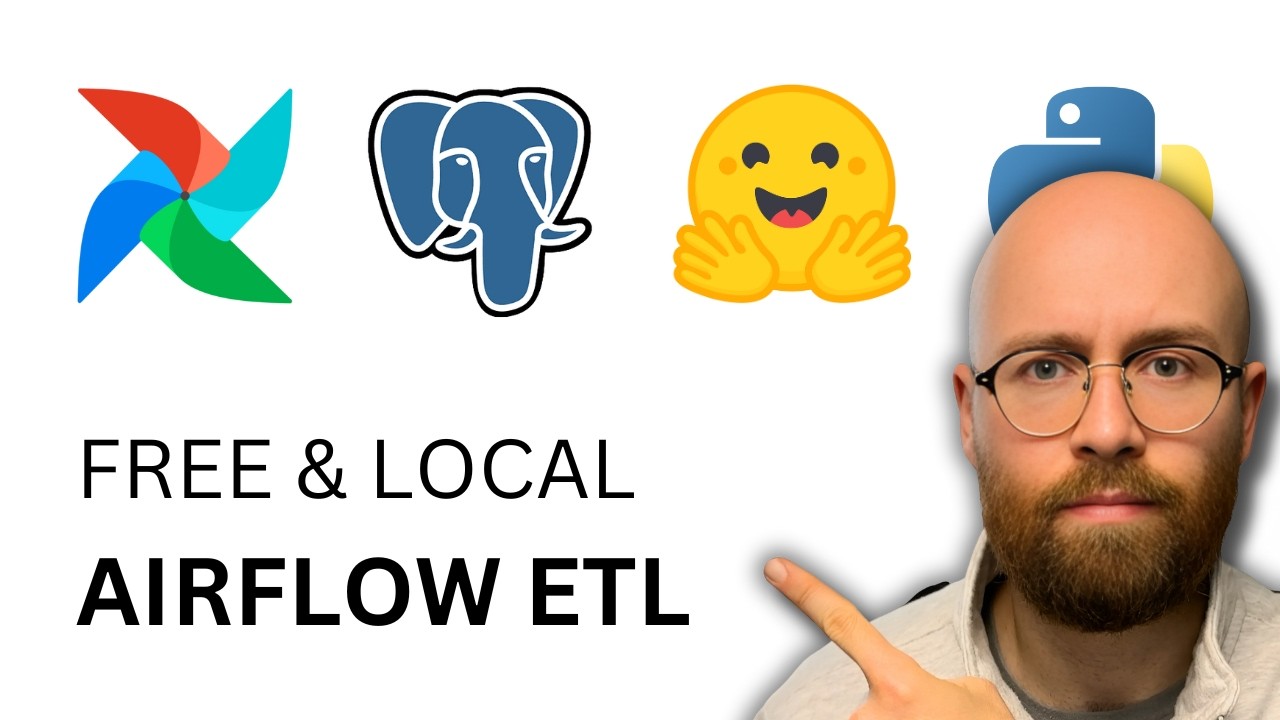The video provides a beginner-friendly, 20-minute tutorial on building an ETL pipeline for AI model data using Apache Airflow, Docker, and PostgreSQL, demonstrating how to extract data from Hugging Face, transform it, and load it into a database. It guides viewers through setting up the environment, coding the DAG, and monitoring the pipeline, emphasizing reproducibility and best practices in data engineering for AI projects.
The video provides a beginner-friendly guide to building an ETL pipeline for AI model data using Apache Airflow, all within 20 minutes. It starts by explaining the purpose of the pipeline: extracting data from the Hugging Face API, transforming it by removing duplicates and null values, and loading it into a PostgreSQL database managed via PGAdmin. The setup leverages Docker and Docker Compose to simplify the environment configuration, making it easy to replicate and share the pipeline without dependency issues.
The presenter introduces Apache Airflow as a tool for managing Directed Acyclic Graphs (DAGs), which are ideal for sequential ETL tasks. Using Docker ensures a lightweight, portable environment, and the guide walks through installing Docker, setting up Airflow with Docker Compose, and configuring the necessary components like PGAdmin and PostgreSQL. The process involves creating a custom Dockerfile to install required Python packages, ensuring all dependencies are contained within the environment, which prevents compatibility issues across different machines.
Next, the video covers configuring the Docker environment, including editing the Docker Compose file to include PGAdmin for database management and adjusting resource allocations for Docker Desktop. The presenter demonstrates how to initialize and run the containers, connect PGAdmin to the PostgreSQL database, and create a dedicated database for storing AI models. They also show how to set up Airflow connections to the database, enabling seamless integration between Airflow and PostgreSQL for data storage.
The core of the tutorial focuses on coding the DAG in Python, where the user creates three main tasks: extracting data from Hugging Face, transforming it by cleaning and deduplicating, and loading it into PostgreSQL. The code uses Airflow operators and hooks to manage these steps, passing data between tasks via XComs. The presenter explains how to write each task, set dependencies, and trigger the pipeline manually or on a schedule. They also demonstrate monitoring the pipeline’s execution, viewing logs, and troubleshooting errors.
Finally, the video shows how to verify the data in PGAdmin by querying the database directly. The pipeline successfully extracts 50 models from Hugging Face, processes them, and inserts the cleaned data into the PostgreSQL table. The presenter emphasizes that this example is a simple yet effective demonstration of ETL principles and how to set up a scalable, reproducible environment for AI data pipelines. They conclude by recommending Data Camp’s Airflow course for deeper learning, stressing the importance of understanding the fundamentals alongside AI tools to succeed in data engineering.
